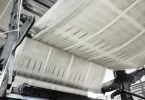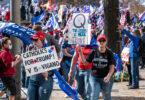 Polling released last week by Ray Morgan Research suggests state opposition leader Daniel Andrews had backed a loser by promising to scrap the East West Link project if elected in November. The polling company was emphatic: “A clear majority of Victorian electors (63.5 per cent) believe the East West Link tunnel should proceed regardless of who they plan to vote for in November’s Victorian State Election.”
Polling released last week by Ray Morgan Research suggests state opposition leader Daniel Andrews had backed a loser by promising to scrap the East West Link project if elected in November. The polling company was emphatic: “A clear majority of Victorian electors (63.5 per cent) believe the East West Link tunnel should proceed regardless of who they plan to vote for in November’s Victorian State Election.”
Respondents were asked a simple question about whether they believed the tunnel should be built, with only a yes or no answer possible. So far, so convincing – but what the Morgan poll didn’t do was ask people where the East West Link sits in their list of priorities. Ask someone if they’d like a new phone and you’d get a high number of people saying yes, but does that mean the phone is incredibly important to them? What if you offered them a car, a house , or a holiday instead? Suddenly, the phone goes down the order.
Down the order is exactly where the East West Link sits on most voters’ priorities. An Age/Nielsen poll conducted in March found that Victorians thought the tunnel was the least important infrastructure project aimed at easing congestion. The planned removal of 50 level crossings received support from 27 per cent of respondents, the metro rail project 47 per cent and the East West Link just 24 per cent. Less than one quarter of respondents felt the tunnel was the best way to improve congestion and liveability.
However, it gets worse. When voters were asked to rank the issues that were most important to them in the upcoming election, roads were rated the least important out of the eight options given. Just 4 per cent of people said it was the most important issue, on par with the environment (4 per cent), law and order (6 per cent) and public transport (10 per cent). As you would expect, major state issues such as education (16 per cent), employment (22 per cent) and health (26 per cent) ranked highest.
So why does the East West Link continue to dominate headlines? It is a big project, sure, and at $8 billion an expensive one. There are valid arguments that the money could be better spent elsewhere, as there always is with government spending, but that doesn’t explain the headline-grabbing nature of the story. Essentially, it comes down to conflict: the East West Link has been the subject of a vocal campaign by a small band of protesters for months now, and their numerous clashes with police are scenes the media thrive on.
The issue is largely an inner-city one, with most of the noise coming from left-leaning enclaves in Labor-Greens contested seats such as Melbourne, Richmond, Brunswick and Northcote. But one Labor insider working in a marginal inner-city seat told City Journal these seats wouldn’t be won or lost based on the East West Link or even local issues, but on which party can best harness the anti-Abbott sentiment in the community. With state Labor scrapping the plan, the tunnel is now even more of a moot point in these battlegrounds.
For journalists, the East West Link is an easy story to cover. There are clear demarcations between those for and those against the project, plenty of conflict, and great images to boot. It provides a spectacle that is absent in stories about hospitals, jobs, or schools.
But the public deserve better. There are plenty of issues Victorians care about much more than the East West Link. With the election just two-and-a-half months away, it’s time the media got around to reporting them.






